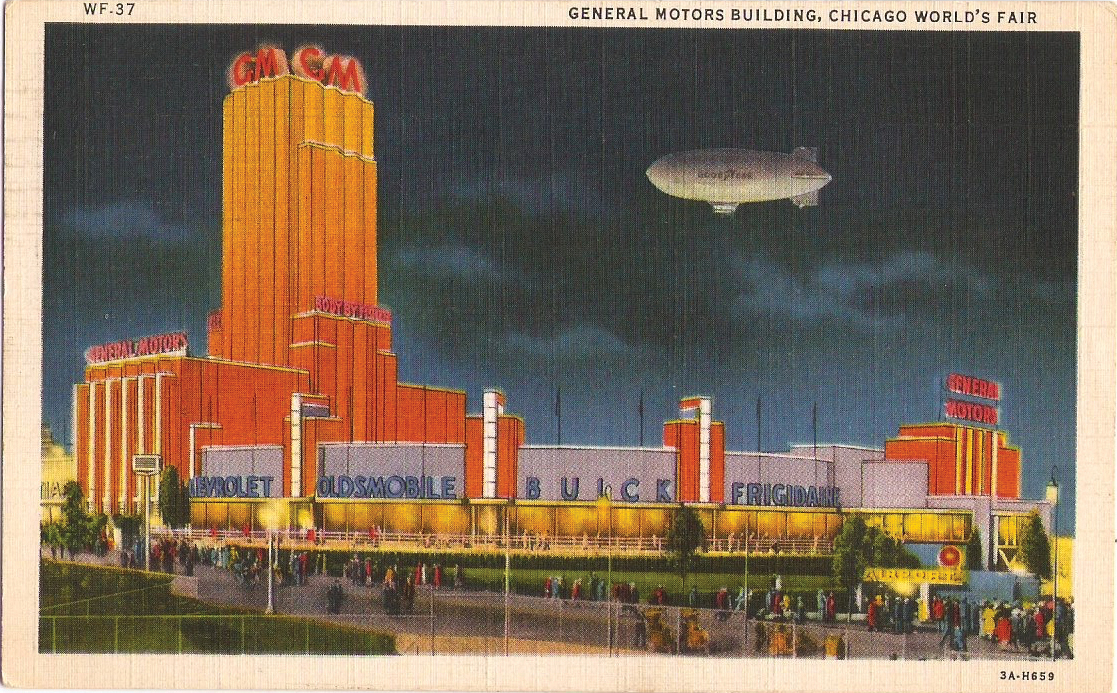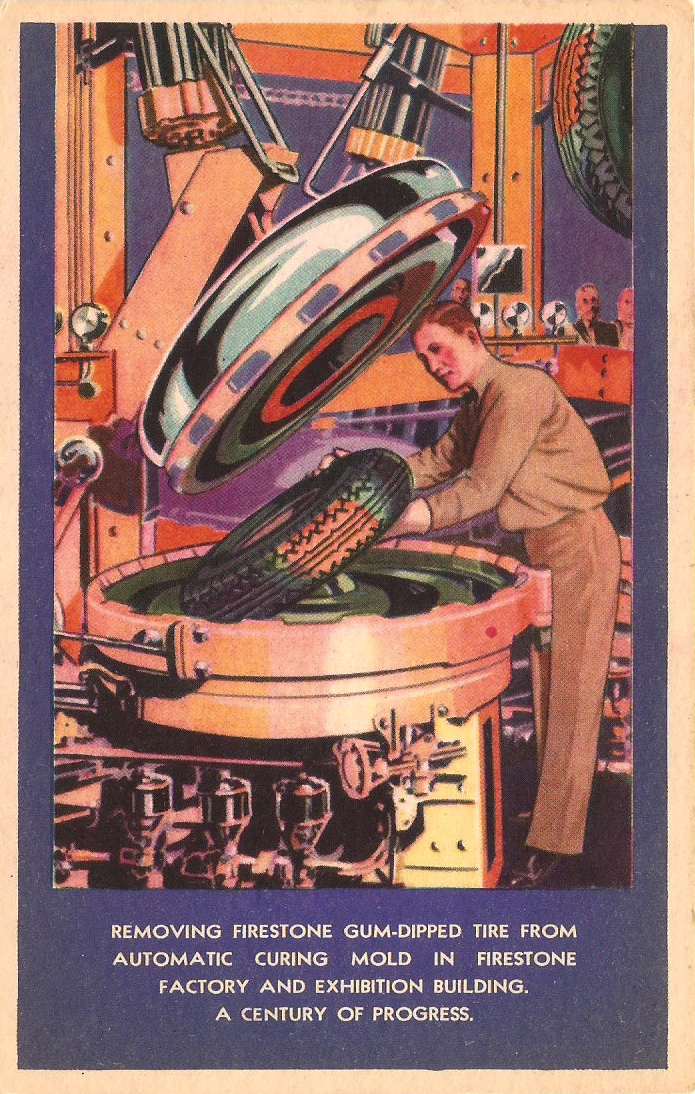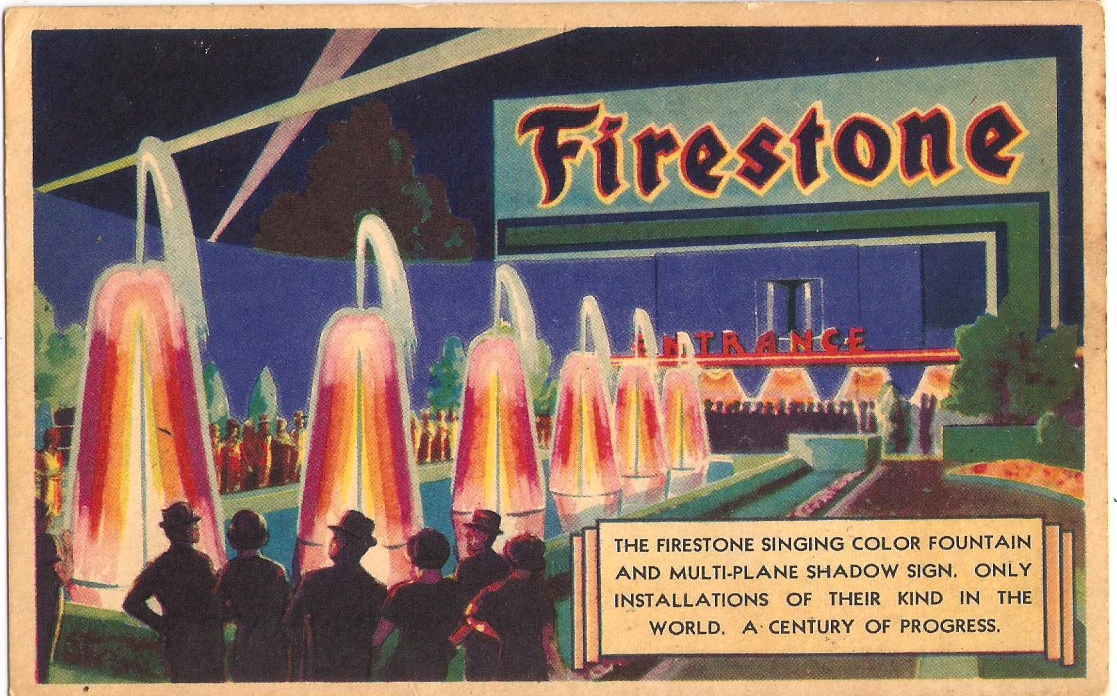Michael Bushnell
Northeast News
One of the highlights of the 1933 Chicago World’s Fair was the Firestone Singing Color Fountain.
The description on the back of the card reads: “Beneath the misty fountain domes is a battery of colored lights. As the music fills the garden, the varying sound wave lengths come in contact with a delicate mechanism, which connects the colored lights. The result is an ever-changing array of beautiful color combinations, playing upon the fountains in perfect harmony with the music. The Firestone multi-color shadow sign is constructed of shadow planes behind which are thousands of incandescent bulbs, reflecting an ever-changing combination of beautiful pastel shades of blue, green, orange and yellow.”
The fair, entitled, “A Century of Progress” was designed to commemorate the 100th anniversary of the incorporation of the City of Chicago. The Firestone exhibit was just one of a number of huge, corporate exhibits that appealed to the public in general, often with miniaturized or replicated processes used in their giant factories.
Firestone was one such company with a huge exhibit that allowed patrons to see actual Firestone tires being made. Another was General Motors, whose 454-foot long show building was staffed by actual GM autoworkers who assembled real vehicles for the throngs of fairgoers who visited daily. The fair was held on roughly 400 acres of landfill on the Lake Michigan shore just south of downtown, between 12th Street and Pershing Road.
Today, Meigs Field and McCormick Place occupy this site. A Century of Progress officially opened on May 27, 1933 and closed on November 12th of that year. Although originally planned for the 1933-season only, it was held over for another year, reopening May 26, 1934, and closing on October 31st.
This extension was due in part to the fair’s public popularity, but mainly as an effort to earn sufficient income to retire its debts.






















